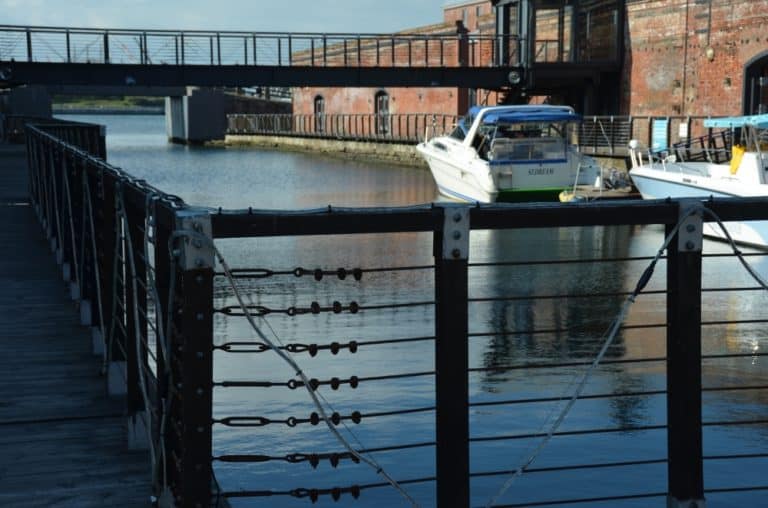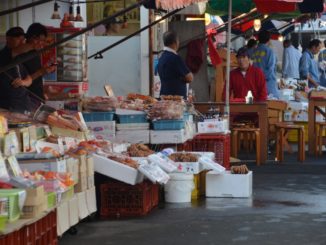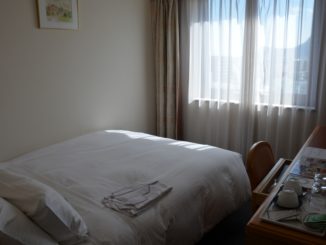Hakodate
Prefecture: Hokkaido
Population: 263,750
Surface Area:677,87 Km2
Telephone area code:0138
Hakodate is the gateway to Hokkaido and is the third largest city in the region.
This was one of the first ports to be opened after the covenants that were imposed on Japan as a result of US military pressure which was manifested by the arrival of a vessel under the command of Commodore Perry.
The city’s architecture is distinguished by, a bit like the hill at Yokohama, the presence of 19th century buildings which were the headquarters of a variety of commercial entities from different countries who had begun to conduct business in the newly opened Japanese market.
Hakodate is actually a natural harbour.
The historical part of the city is on a strip of land, with the sea on both sides, that stretches towards Mount Hakodate from whence it continues towards the interior of the region of Hokkaido.
Hakodate is a lively and animated city, particularly at the end of May when the cherry-blossom is in flower
What to See in Hakodate:
The most popular attraction is Motomachi, the old city with the largest concentration of western buildings from the 1800’s in Japan.
Amongst which are the Russian Orthodox Church, the old Public Hall, the British Consulate and the Chinese Memorial Hall.
The Gokoryaku Fort is a fortified citadel in the form of a star which was built in 1859 to protect the port from possible attack by Russia which is the closest foreign nation to Hokkaido.
The star shape made it possible to situate a larger number of cannons around the citadel making it infinitely more difficult for any hostile forces to capture the fort.
This is the place where the final battle between the troops who were loyal to the Shogunate of Tokugawa and those who would form the future Meiji government took place.
Not far from the station is the Morning Market which starts very early in the morning and lasts until the afternoon. This colourful and animated market covers a wide range of goods including fresh fish and fruit. In the nearby restaurants, it is possible to buy fresh seafood dishes.
Also of interest, albeit it now appears somewhat dated, is the Museum of the People of the North, which is a museum about the history of Hokkaido and the Ainu people.
Reachable in 30 minutes by bus or, via the cable car, is the summit of Mount Hakodate where you can enjoy spectacular views of the city and of the bay.
This is considered to be one of the most impressive panoramas in the whole of Japan.
More or less 30 minutes outside the city, in the Yunaka district, is the fascinating convent of the Trappist sisters which was built in a neo-Romanesque / neo-Gothic style at the beginning of the last century. The nuns are famous for the sweets and biscuits that they make in the convent’s kitchens.
Around 20 kilometres away, on the road to Sapporo, is the Onuma Quasi-National Park.
This is a beautiful location which is made up of small islands on the two lakes of Onuma (the large lake) and Konuma (the little lake).
The small islets are linked by bridges and can be visited on foot or by bicycle.
Depending on the season, you can also do a tour of the lake by boat or, climb the Komagatake volcano from which you can enjoy more spectacular views.
History of Hakodate:
The city’s beginnings were made by the merchant Kono Kagano Masamichi with the construction of a residence in this fishing village belonging to the Ainu of Usukeshi.
But, his descendants abandoned it because of the Ainu rebellion.
The latter were permanently in conflict with the armed merchant families throughout the next century until, at the end of the 1600’s, significant Japanese intervention repressed the Ainu revolt and brought about an even greater control over the island.
In 1700, control of the city was in the hands of the Matsumae family and in the 1800’s it fell under the control of the Tokugawa.
The merchant Takadaya Kaheri is considered to be the founder of the port of Hakodate as he was attributed with having opened up the fishing channels further north towards the Kuril Islands.
Hakodate was the stage on which the final battle between the imperial forces and those of the Tokugawa was fought.
Subsequently, it would become one of the few Japanese ports that was open to foreign vessels.
Morning market
[ Sept.2014 ] In Hakodate in Hokkaido, Japan, they have a morning market near the station. I looked up and found that this started in 1945 soon after the end of the WW2 by farmers…
About hotels
[ Sept.2014 ] We booked the hotels by internet beforehand for this Hokkaido holiday in Japan. We stayed one night in Hakodate and two night in Sapporo. Our main requirement was the location near the…



